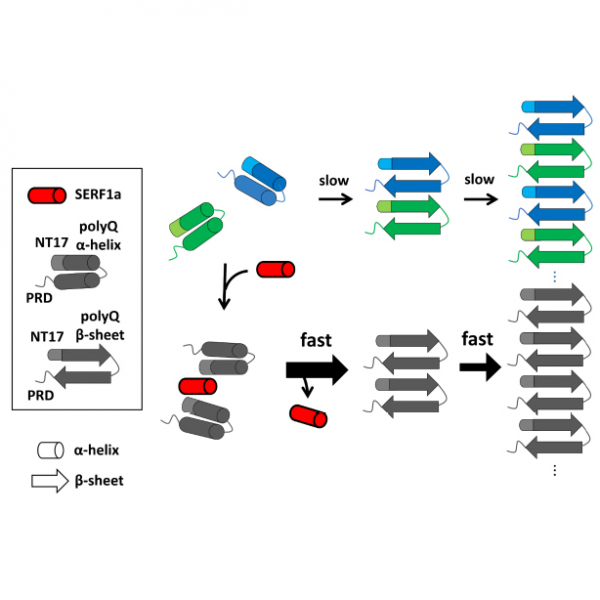Abnormal polyglutamine (polyQ) expansion and fibrillization occur in Huntington’s disease (HD). Amyloid modifier SERF enhances amyloid formation, but the underlying mechanism is not revealed. Here, the fibrillization and toxicity effect of SERF1a on Htt-exon1 are examined. SERF1a enhances the fibrillization of and interacts with mutant thioredoxin (Trx)-fused Httex1. NMR studies with Htt peptides show that TrxHttex1-39Q interacts with the helical regions in SERF1a and SERF1a preferentially interacts with the N-terminal 17 residues of Htt. Time-course analysis shows that SERF1a induces mutant TrxHttex1 to a single conformation enriched of β-sheet. Co-expression of SERF1a and Httex1-polyQ in neuroblastoma and lentiviral infection of SERF1a in HD-induced polypotent stem cell (iPSC)-derived neurons demonstrates the detrimental effect of SERF1a in HD. Higher level of SERF1a transcript or protein is detected in HD iPSC, transgenic mice, and HD plasma. Overall, this study provides molecular mechanism for SERF1a and mutant Httex1 to facilitate therapeutic development for HD.
